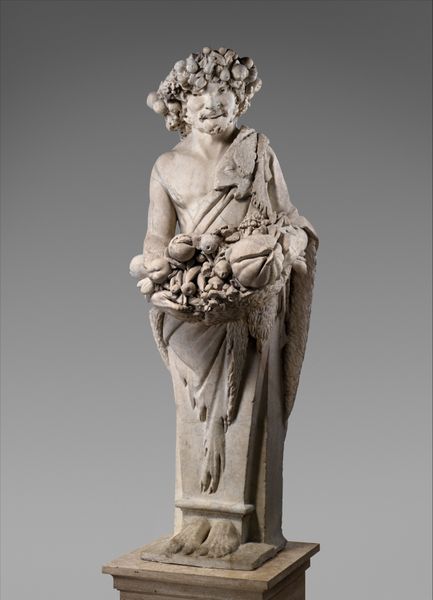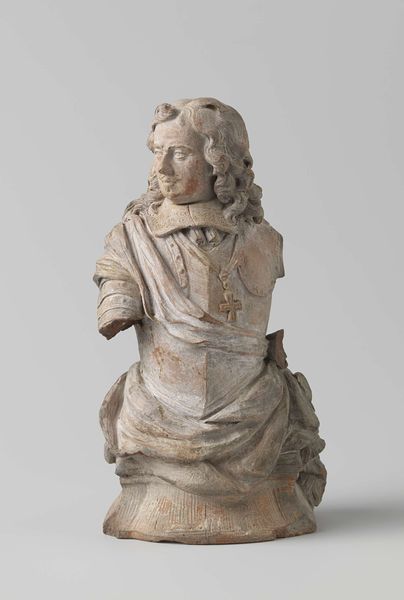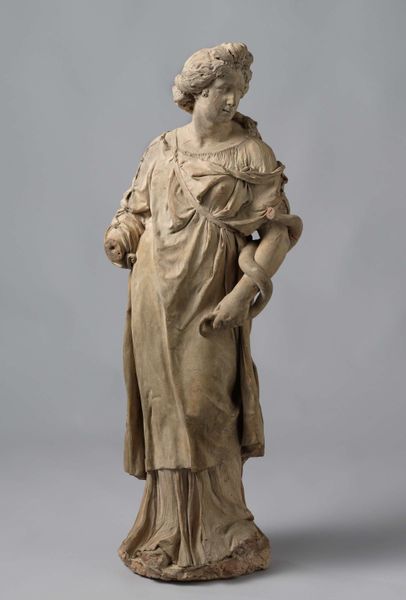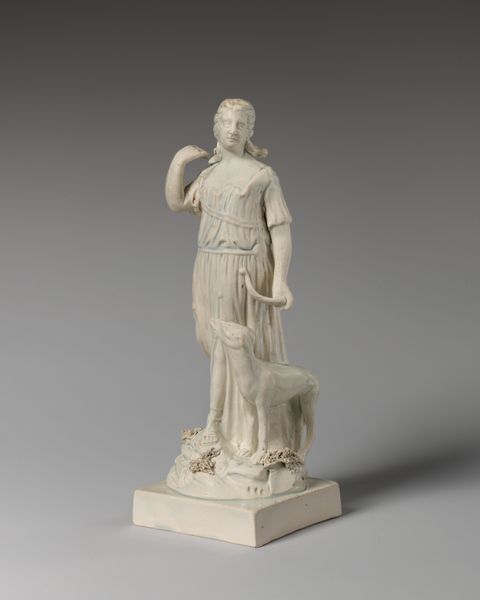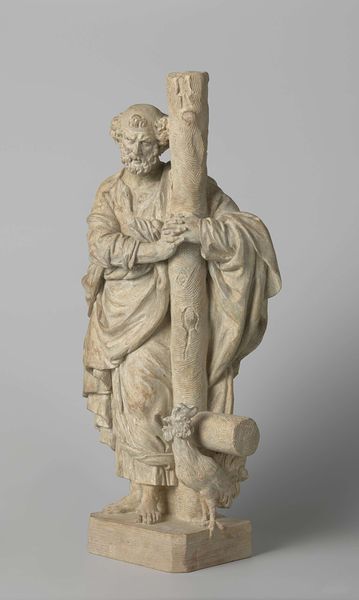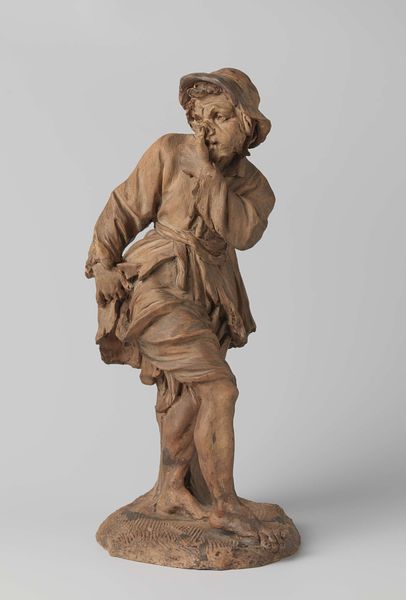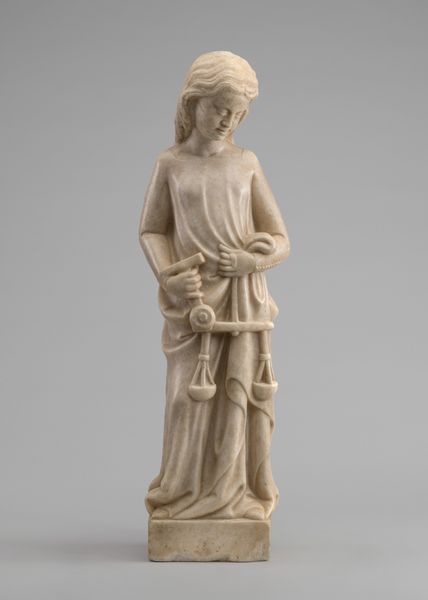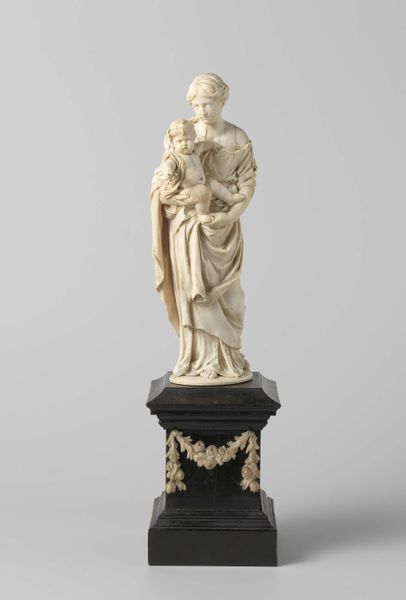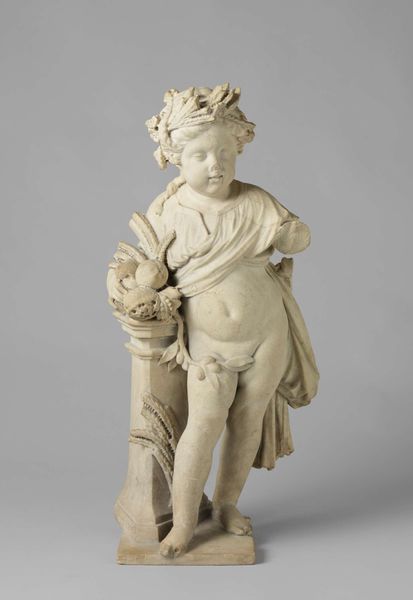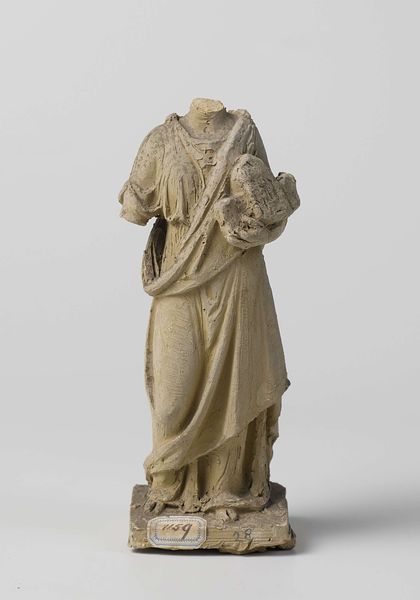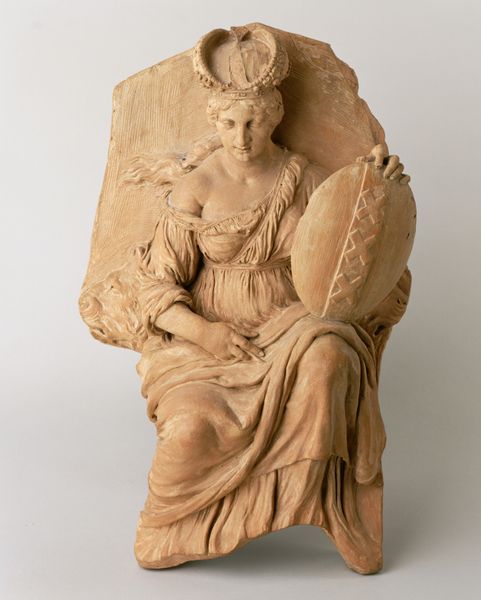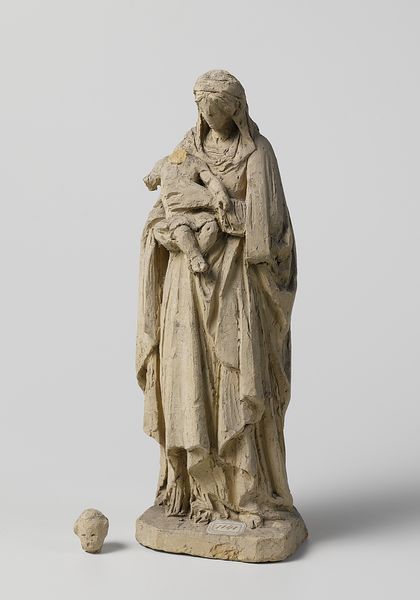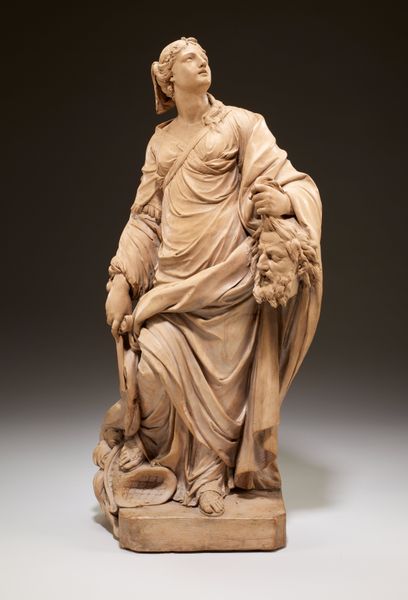
Spring in the guise of Flora (one of a pair) 1616 - 1617
0:00
0:00
sculpture
#
portrait
#
baroque
#
sculpture
#
figuration
#
sculpture
#
decorative-art
#
italian-renaissance
Dimensions: Overall (confirmed): 89 1/8 × 34 3/8 × 27 1/2 in., 2507 lb. (226.4 × 87.3 × 69.9 cm, 1137.2 kg); Pedestal, confirmed: 42 1/2 × 30 × 30 in., 2719 lb. (108 × 76.2 × 76.2 cm, 1233.3 kg)
Copyright: Public Domain
Curator: Pietro Bernini’s marble sculpture, "Spring in the guise of Flora," crafted between 1616 and 1617, presents a captivating study in Baroque form and allegory. Editor: The first impression is that she feels unfinished; like we are looking at an early form, and the medium is heavily evident. Curator: The treatment of the drapery, the sinuous lines of her pose—it's a masterful demonstration of Bernini’s ability to evoke a sense of dynamic movement from solid stone. Look closely at the folds and the interplay of light and shadow. It accentuates her ethereal form and embodies the essence of spring. Editor: Right, and while I can appreciate the movement, I am drawn more to the raw quality of the marble itself and also to the flowers. These natural, unrefined details clash somewhat with the polished aspirations of classical sculpture, adding, what I interpret as a different kind of beauty. Curator: This piece isn't just a celebration of seasonal renewal; it engages in complex dialogues with classical ideals. She represents Flora, a Roman goddess of springtime, which underscores a rich layer of semiotic meaning. Consider how the cascading arrangement of flowers serves both decorative and symbolic purposes, invoking themes of abundance, fertility, and the transient beauty of nature. Editor: From a practical point of view, the presence of those unprocessed blocks below the draped feet point to questions about Bernini’s method. Did he, perhaps, involve apprentices in the creation of this? Also what considerations impacted the production process? I suspect those answers lie within the Met archives! Curator: Considering both aspects gives rise to compelling questions of value and purpose. Exploring this artwork enables us to delve into its complex relationship with mythology and aesthetic value. Editor: Agreed; and by pondering the nature of labor involved, along with materiality and the physical presence of Bernini's marble, this unveils valuable connections between society, artistry, and craft.
Comments
No comments
Be the first to comment and join the conversation on the ultimate creative platform.
